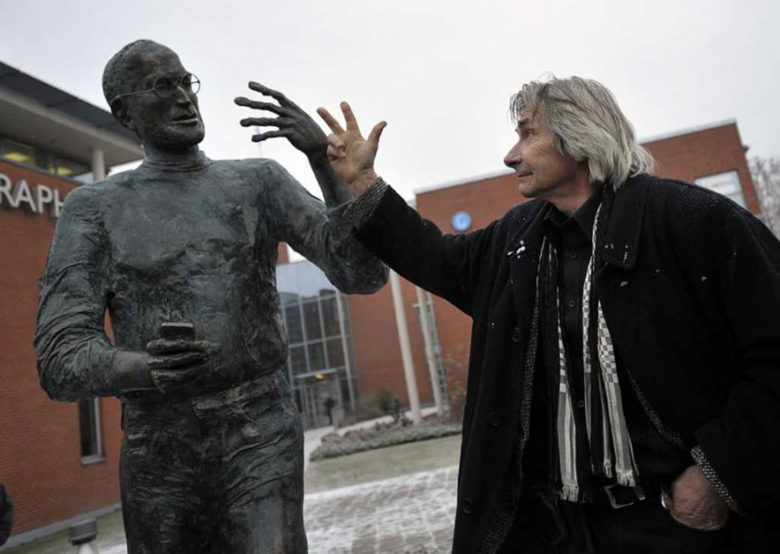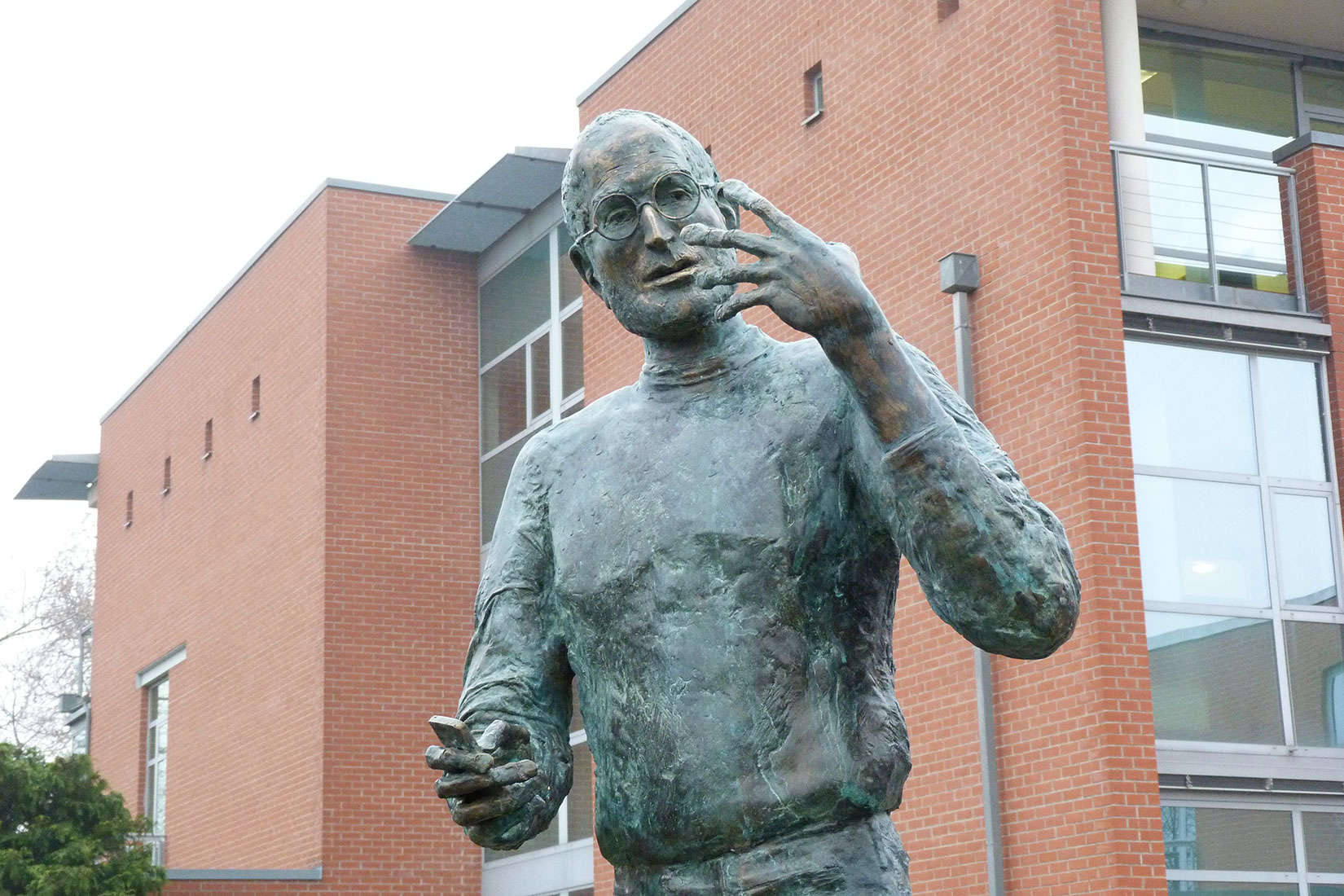 Steve Jobs left a lasting impression on Hungarian software developer Gabor Bojar when the two met in 1984.
Steve Jobs left a lasting impression on Hungarian software developer Gabor Bojar when the two met in 1984.
Today that impression stands more than 7-feet tall, in jeans and mock-neck shirt, of course, cast in bronze outside of Bojar’s firm in Budapest.
Soon after Jobs died in October 2011, Bojar commissioned well-known painter and sculptor Tóth Ernö to immortalize the Apple founder in a posture known to the world — mid-pace on a stage and gesturing boldly with a hand as he introduces some innovative device we can’t live without.
Jobs became a kind of deity when he passed, and artists around the world created works — tattoos, statues, paintings and action figures — recognizing the worship of what fans see as his transformative imprint on technology, telecommunications, music and other industries.

Photo courtesy of Tóth Ernö
Remembering Jobs
“There are memorials of Steve Jobs every year at the sculpture, when wreaths and flowers are brought there,” Ernö told Cult of Mac. “My Steve Jobs sculpture was inspired by … (his) temperament, mentality and maximalism. I hope this can be felt when somebody looks at the statue.”
Ernö created the be-speckled Jobs statue, standing more than 7-feet and weighing 440 pounds, in about two months. It was unveiled in December of 2011 in a public ceremony. Ernö also added a memorial placard purposely shaped like an iPad.
Graphisoft makes modeling software for architects and Bojar met Jobs at a tech conference in Germany in 1984, where Bojar was demonstrating 3D software.
Jobs was so impressed, he asked Graphisoft to develop the modeling software for the Lisa computer and he committed Apple’s marketing support.

Photo courtesy of Tóth Ernö
Inspired to take risks
Bojar later smuggled in a Macintosh computer given to him by Jobs — an embargoed product in Communist-controlled Hungary, so that he could develop similar software for the Mac.
“A real entrepreneur is never afraid to take a risk,” Bojar says in an interview for a Graphisoft blog. Had they not had that initial meeting, Bojar said Graphisoft may not exist today.
Bojar spoke of Jobs with great reverence at the dedication of the statue.
He said: “He was a real leader in the true sense of the word because he didn’t personally create the miracles, but rather, with his fantastic charisma and power of suggestion, brought out the best in his colleagues. We know he was a very difficult man as well, maybe even unbearable, but geniuses are generally difficult people.
“We can best serve Steve Jobs’ legacy if we all, to the best of our ability, carry on his spirit in our firms, and further the cause of this amazing and new information technology revolution.”
Click here to see Ernö’s work on the Jobs statue.


